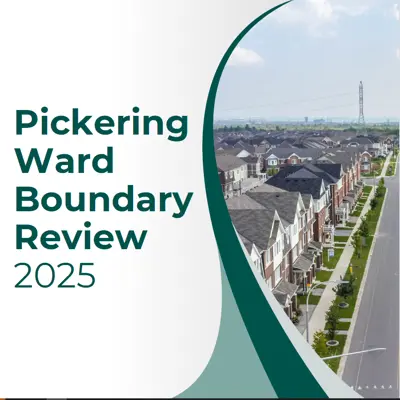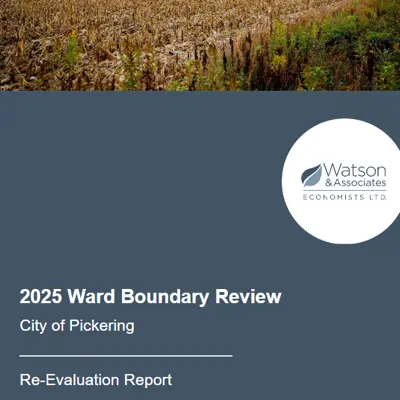Take Notice that the Council of The Corporation of the City of Pickering passed By-law Number 8196/25 on July 15, 2025 pursuant to Section 222 of the Municipal Act, 2001 (the “Act”), to change the boundaries of the three (3) wards in the City of Pickering. The changes to the wards will come into place for the 2026 Municipal Election.
And Take Notice that under subsection 222(4) of the Act, any person or agency may may appeal to the Ontario Land Tribunal (OLT) in respect to the decision by filing a Notice of Appeal, no later than 4:30 pm on August 29, 2025. The filing of an appeal after 4:30 pm will be deemed to have been received the next business day.
A Notice of Appeal can be filed using the OLT e-File Service, along with any applicable appeal fees, by visiting olt.gov.on.ca/e-file-service/.
In the event the OLT e-File portal is not available, a Notice of Appeal may be submitted to:
Susan Cassel
City Clerk, City of Pickering
One The Esplanade
Pickering, ON L1V 6K7
clerks@pickering.ca
Please note that the Notice of Appeal must:
- be on the prescribed form as provided by the OLT;
- set out the objection to the by-law and the reasons in support of the objection; and,
- be accompanied by the fees required by the OLT. If paying by certified cheque or money order, it must be payable to the “Minister of Finance, Province of Ontario”.
Further information regarding this matter may be obtained by contacting the City Clerk’s Office at 905.420.4611, or clerks@pickering.ca.
For more information on the ward boundary review and the new ward boundaries visit pickering.ca/wardboundaries.
Dated at the City of Pickering this 23rd day of July, 2025.
Susan Cassel
City Clerk, City of Pickering
One The Esplanade
Pickering, ON L1V 6K7



